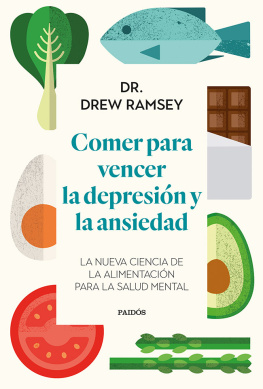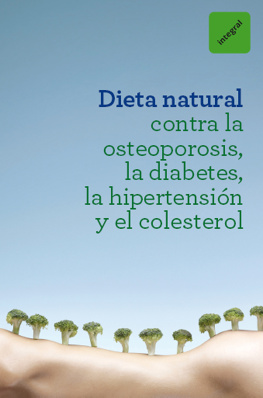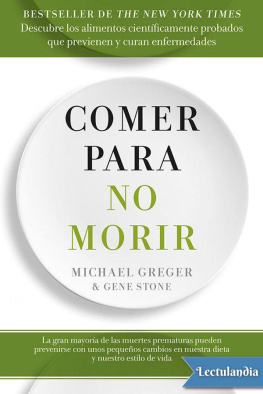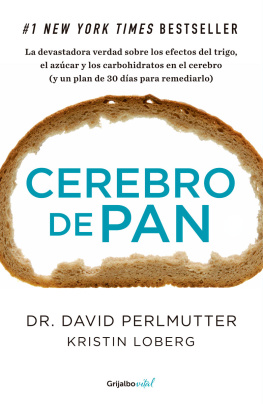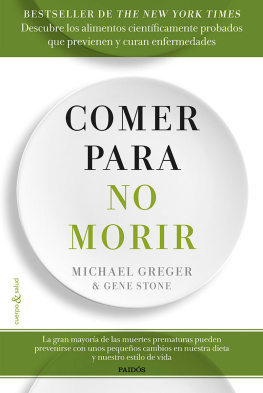
Notas
Capítulo 1: Angiogénesis
J. Folkman y R. Kalluri, “Cancer without Disease”, Nature 427, núm. 6977 (2004): p. 787.
B. N. Ames, M. K. Shigenaga y T. M. Hagen, “Oxidants, Antioxidants, and the Degenerative Diseases of Aging”, Proceedings of the National Academy of Sciences USA 90, núm. 17 (1993): pp. 7915-7922; S. Clancy, “DNA Damage and Repair: Mechanisms for Maintaining DNA Integrity”, Nature Education 1, núm. 1 (2008): p. 103.
J. Folkman y R. Kalluri, “Cancer without Disease”, Nature 427, núm. 6977 (2004): p. 787.
M. Lovett, K. Lee, A. Edwards y D. L. Kaplan, “Vascularization Strategies for Tissue Engineering”, Tissue Engineering Part B: Reviews 15, núm. 3 (2009): pp. 353-370.
Robyn D. Pereira et al., “Angiogenesis in the Placenta: The Role of Reactive Oxygen Species Signaling”, BioMed Research International (2015): p. 814543.
L. A. DiPietro, “Angiogenesis and Wound Repair: When Enough Is Enough”, Journal of Leukocyte Biology 100, núm. 5 (2016): pp. 979-984.
A. Orlidge y P. A. D’Amore, “Inhibition of Capillary Endothelial Cell Growth by Pericytes and Smooth Muscle Cells”, Journal of Cell Biology 105, núm. 3 (1987): pp. 1455-1462.
M. A. Gimbrone, S. B. Leapman, R. S. Cotran y J. Folkman, “Tumor Dormancy In Vivo by Prevention of Neovascularization”, Journal of Experimental Medicine 136 (1974): p. 261.
C. W. White et al., “Treatment of Pulmonary Hemangiomatosis with Recombinant Interferon Alfa-2a”, New England Journal of Medicine 320, núm. 18 (1989): pp. 1197-1200.
Y. Cao y R. Langer, “A Review of Judah Folkman’s Remarkable Achievements in Biomedicine”, Proceedings of the National Academy of Sciences USA 105, núm. 36 (2008): pp. 13203-13205.
A. H. Vagnucci, Jr. y W. W. Li, “Alzheimer’s Disease and Angiogenesis”, Lancet 361, núm. 9357 (2003): pp. 605-608.
J. V. Silha, M. Krsek, P. Sucharda y L. J. Murphy, “Angiogenic Factors Are Elevated in Overweight and Obese Individuals”, International Journal of Obesity 29, núm. 11 (2005): pp. 1308-1314.
M. A. Rupnick et al., “Adipose Tissue Mass Can Be Regulated through the Vasculature”, Proceedings of the National Academy of Sciences USA 99, núm. 16 (2002): pp. 10730-10735.
P. Schratzberger et al., “Reversal of Experimental Diabetic Neuropathy by VEGF Gene Transfer”, Journal of Clinical Investigation 107, núm. 9 (2001): pp. 1083-1092.
R. Kirchmair et al., “Therapeutic Angiogenesis Inhibits or Rescues Chemotherapy-Induced Peripheral Neuropathy: Taxol-and Thalidomide-Induced Injury of Vasa Nervorum Is Ameliorated by VEGF”, Molecular Therapy 15, núm. 1 (2007): pp. 69-75.
S. R. Nussbaum et al., “An Economic Evaluation of the Impact, Cost, and Medicare Policy Implications of Chronic Nonhealing Wounds”, Value Health 21, núm. 1 (2018): pp. 27-32; D. G. Armstrong, J. Wrobel y J. M. Robbins, “Guest Editorial: Are Diabetes-Related Wounds and Amputations Worse than Cancer?”, International Wound Journal 4, núm. 4 (2007): pp. 286-287.
Emiko Jozuka y Yoko Ishitani, “World’s Oldest Person Dies at 117”, CNN, .
Capítulo 2: Regeneración
R. J. Kara et al., “Fetal Cells Traffic to Injured Maternal Myocardium and Undergo Cardiac Differentiation”, Circulation Research 110, núm. 1 (2012): pp. 82-93.
Ron Milo y Rob Phillips, “How Quickly Do Different Cells in the Body Replace Themselves?”, Cell Biology by the Numbers, ; “Lifespan of a Red Blood Cell”, Bionumbers, .
“Determination of Adipose Cell Size in Eight Epididymal Fat Pads by Four Methods”, Bionumbers, .
J. E. Till y E. A. McCulloch, “A Direct Measurement of the Radiation Sensitivity of Normal Mouse Bone Marrow Cells”, Radiation Research 14, núm. 2 (1961): pp. 213-222.
Eva Bianconi et al., “An Estimation of the Number of Cells in the Human Body”, Annals of Human Biology 40, núm. 6 (2013).
S. Y. Rabbany, B. Heissig, K. Hattori y S. Rafii, “Molecular pathways regulating mobilization of marrow-derived stem cells for tissue revascularization”, Trends in Molecular Medicine 9, núm. 3 (2003): pp. 109-117.
I. Petit, D. Jin y S. Rafii, “The SDF-1-CXCR4 Signaling Pathway: A Molecular Hub Modulating Neo-Angiogenesis”, Trends in Immunology 28, núm. 7 (2007): pp. 299-307.
E. T. Condon, J. H. Wang y H. P. Redmond, “Surgical Injury Induces the Mobilization of Endothelial Progenitor Cells”, Surgery 135, núm. 6 (2004): pp. 657-661.
G. D. Kusuma, J. Carthew, R. Lim y J. E. Frith, “Effect of the Microenvironment on Mesenchymal Stem Cell Paracrine Signaling: Opportunities to Engineer the Therapeutic Effect”, Stem Cells and Development 26, núm. 9 (2017): pp. 617-631; S. Keshtkar, N. Azarpira y M. H. Ghahremani, “Mesenchymal Stem Cell-Derived Extracellular Vesicles: Novel Frontiers in Regenerative Medicine”, Stem Cell Research and Therapy 9, núm. 1 (2018): p. 63.
I. Linero y O. Chaparro, “Paracrine Effect of Mesenchymal Stem Cells Derived from Human Adipose Tissue in Bone Regeneration”, plos One 9, núm. 9 (2014): e107001.
F. Mobarrez et al., “The Effects of Smoking on Levels of Endothelial Progenitor Cells and Microparticles in the Blood of Healthy Volunteers”, plos One 9, núm. 2 (2014): e90314; S. Beyth et al., “Cigarette Smoking Is Associated with a Lower Concentration of CD105(+) Bone Marrow Progenitor Cells”, Bone Marrow Research 2015 (2015): p. 914935.
S. E. Michaud et al., “Circulating Endothelial Progenitor Cells from Healthy Smokers Exhibit Impaired Functional Activities”, Atherosclerosis 187, núm. 2 (2006): pp. 423-432.
C. Heiss et al., “Brief Secondhand Smoke Exposure Depresses Endothelial Progenitor Cells Activity and Endothelial Function: Sustained Vascular Injury and Blunted Nitric Oxide Production”, Journal of the American College of Cardiology 51, núm. 18 (2008): pp. 1760-1771.
T. E. O’Toole et al., “Episodic Exposure to Fine Particulate Air Pollution Decreases Circulating Levels of Endothelial Progenitor Cells”, Circulation Research 107, núm. 2 (2010): pp. 200-203.
J. K. Williams et al., “The Effects of Ethanol Consumption on Vasculogenesis Potential in Nonhuman Primates”, Alcoholism: Clinical and Experimental Research 32, núm. 1 (2008): pp. 155-161.
H. Wang et al., “In Utero Exposure to Alcohol Alters Cell Fate Decisions by Hematopoietic Progenitors in the Bone Marrow of Offspring Mice during Neonatal Development”, Cell Immunology 239, núm. 1 (2006): pp. 75-85.
J. A. McClain, D. M. Hayes, S. A. Morris y K. Nixon, “Adolescent Binge Alcohol Exposure Alters Hippocampal Progenitor Cell Proliferation in Rats: Effects on Cell Cycle Kinetics”, Journal of Comparative Neurology 519, núm. 13 (2011): pp. 2697-2710.
Investigadores de la Universidad de Colorado, en Boulder, analizaron esto al comparar las células madre de un grupo de hombres mayores (alrededor de sesenta años) que gozaba de buena salud y no padecía obesidad con las de un grupo de hombres más jóvenes (en sus veinte). Las diferencias fueron considerables. Las células progenitoras endoteliales (CPE) de las personas mayores produjeron 60% menos factores que ayudan a la supervivencia de las células en comparación con las células madre del grupo de jóvenes.
M. Pirro et al., “Hypercholesterolemia-Associated Endothelial Progenitor Cell Dysfunction”, Therapeutic Advances in Cardiovascular Disease 2, núm. 5 (2008): pp. 329-339.
D. R. Pu y L. Liu, “HDL Slowing Down Endothelial Progenitor Cells Senescence: A Novel Anti-Atherogenic Property of HDL”,


